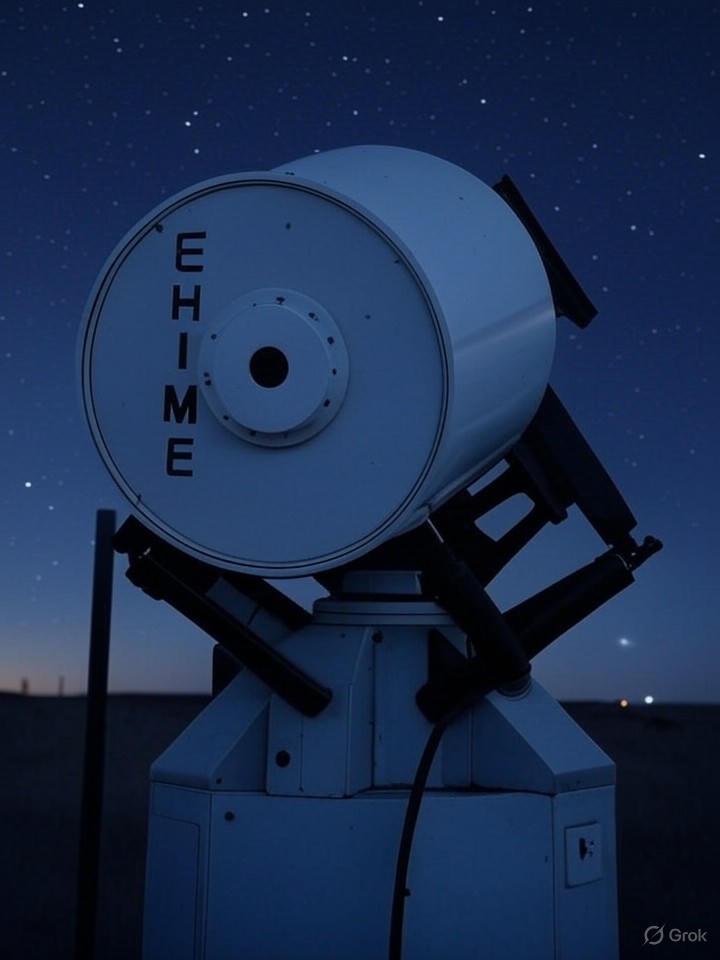
In March 2025, astronomers using the Canadian Hydrogen Intensity Mapping Experiment (CHIME) telescope detected the brightest fast radio burst (FRB) ever recorded, designated FRB 20250316A. This unprecedented event originated from the nearby spiral galaxy NGC 4141, located approximately 130 million light-years away in the constellation Ursa Major. The discovery not only provides new insights into FRBs but also challenges existing theories about their origins and mechanisms.
Unprecedented Detection Capabilities
Since its operational launch in 2018, CHIME has significantly advanced the detection of FRBs. The telescope’s innovative design, featuring four cylindrical reflectors, allows it to scan a large area of the sky daily, capturing bursts that might be overlooked by traditional instruments. In its first year alone, CHIME identified over 500 FRBs, distinguishing between one-off bursts and repeating events, suggesting a variety of underlying processes.
The recent detection of FRB 20250316A, informally known as RBFLOAT or the “Radio Brightest Flash of All Time,” has sparked considerable interest among researchers. The burst’s extraordinary brightness and its relatively close proximity provide an opportunity for detailed analysis, a rarity for such phenomena which typically originate from distant, ancient galaxies.
Challenging Existing Theories
The location of RBFLOAT poses significant questions for astronomers. Traditional theories have linked FRBs to extreme astrophysical environments, such as magnetars—highly magnetized neutron stars. A notable example is a burst from our Milky Way in 2020, which was associated with a magnetar. However, the recent burst’s source in a quiet, older stellar population contradicts this model, as magnetars usually form from recent supernovae.
“This burst is in a surprising location,” said a researcher, indicating that alternative explanations such as colliding neutron stars or exotic white dwarf phenomena may need to be considered.
The nature of RBFLOAT as a non-repeating event further complicates the understanding of these cosmic signals. Scientists have begun to discuss whether FRBs represent multiple classes of events, a notion that has generated excitement within the astronomical community, as seen in discussions on platforms like X.
Technological Advancements and Future Implications
CHIME’s capabilities are bolstered by international collaboration involving institutions such as the University of Toronto, McGill University, and MIT. Recent upgrades, including the deployment of outriggers in California and West Virginia, allow for precise localization of FRBs, enhancing the potential for mapping these cosmic phenomena. The ability to triangulate positions accurately is a leap forward in understanding their origins.
Integrating data from other observatories, such as the James Webb Space Telescope, may provide optical counterparts to these radio signals, potentially enriching the findings and expanding the scope of research into FRBs. A researcher noted that RBFLOAT “challenges magnetar theories,” underscoring the need for a reevaluation of existing models.
The implications of FRBs extend beyond their origins. These bursts can serve as cosmic probes, offering insights into the universe’s structure and evolution. RBFLOAT, being relatively nearby, presents a clearer signal, less affected by intergalactic plasma. This clarity could aid in measuring the universe’s “missing” baryons and refining models of cosmic evolution.
Looking Ahead
As the number of detected FRBs surpasses 1,000, patterns are beginning to emerge. Some FRBs originate from “dead” galaxies, while others exhibit rhythmic repetition. The case of RBFLOAT emphasizes the necessity for diverse models to explain these complex phenomena. As research progresses, the study of FRBs may reveal further insights into dark matter distributions and exotic physics.
This brightest burst serves as a beacon for astronomers, guiding efforts to demystify these enigmatic signals in the vast expanse of the cosmos. The ongoing observations from CHIME and collaborative efforts worldwide may soon unlock the secrets behind fast radio bursts, leading to a deeper understanding of the universe’s most extreme conditions.







